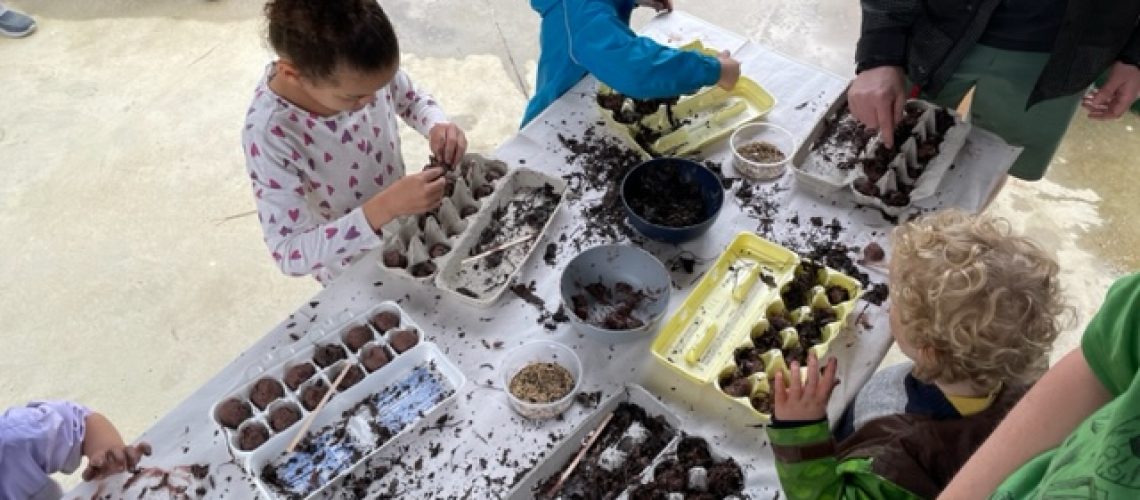Author: Laura Janway, Environmental Sustainability Coordinator
Bee City USA Affiliate: Carrboro, NC
USDA Plant Zone: 8a
My top 5 native pollinator plants:
- Spotted beebalm (Monarda punctata)
- Bearded beggarticks (Bidens aristosa)
- Milkweed (Asclepias spp.)
- Scarlet rose mallow (Hibiscus coccineus)
- Eastern beardtongue (Penstemon laevigatus)
The Town of Carrboro has proudly been a member of Bee City USA since October 2014. For municipal operations, Carrboro has been pursuing a Least Toxic Integrated Pest Management Policy (pdf) since the 1990s, that recognizes the importance of avoiding and minimizing impacts of municipal operations on pollinators and other species.
At the community level, the town works to educate residents on the significance of pollinators in helping to maintain healthy, sustainable habitats, as the town’s Community Climate Action Plan (2017) (pdf) has a significant focus on ecosystem protection and enhancement.
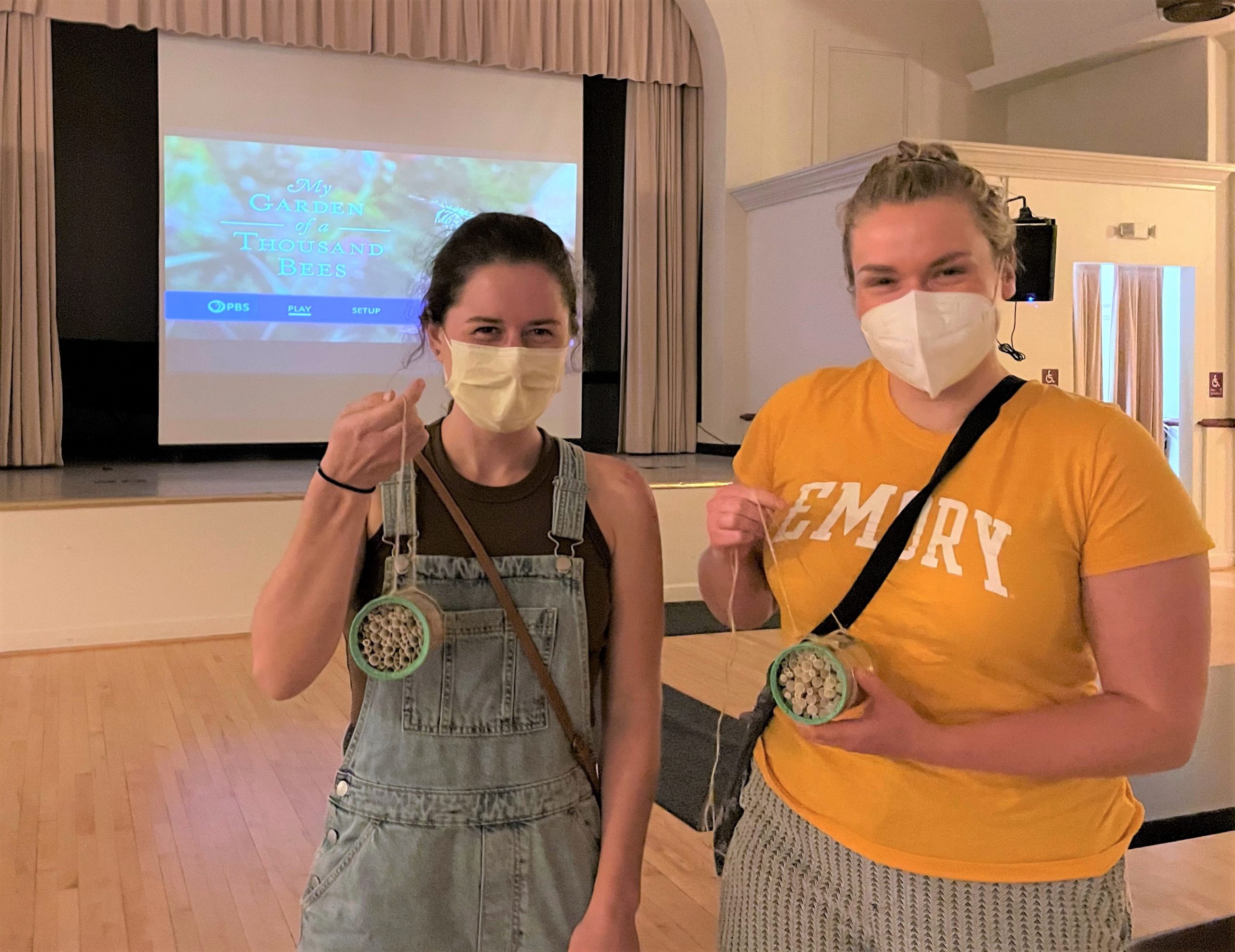
Each year, the town works to engage the community with outreach events. Since 2016, the town has hosted an annual pollinator film screening. Staff also organize invasive species removal events in-town parks. The focus of recent events has been removal of shrubs such as privet (Ligustrum spp.) and vining species such as wisteria (Wisteria spp.) from native trees.
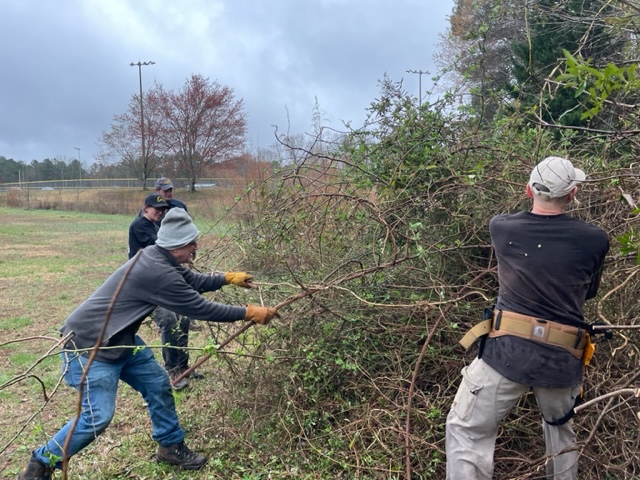
Recently, the own’s Planning and Public Works Department have collaborated to increase the scope of pollinator habitat creation and outreach events throughout Carrboro. In spring 2022, the town participated in No Mow May and implemented No Mow Zones throughout town parks while actively promoting the initiative in the community. The town’s Stormwater Division planted a rain garden with pollinator-friendly plants at Town Hall. Staff also worked with an Eagle Scout and a group of volunteers on an Eagle Scout Project to plant native pollinator-friendly trees and butterfly milkweed plants in Henry “Hank” Anderson III Community Park.

Town of Carrboro staff collaborated with the Carrboro Farmers’ Market for a kids’ pollinator activity as part of their Market Bunch event series. Children were invited to make their own bee hotels for native bees using recyclable materials and color pollinator pictures. Staff also distributed native wildflower seeds to attendees.
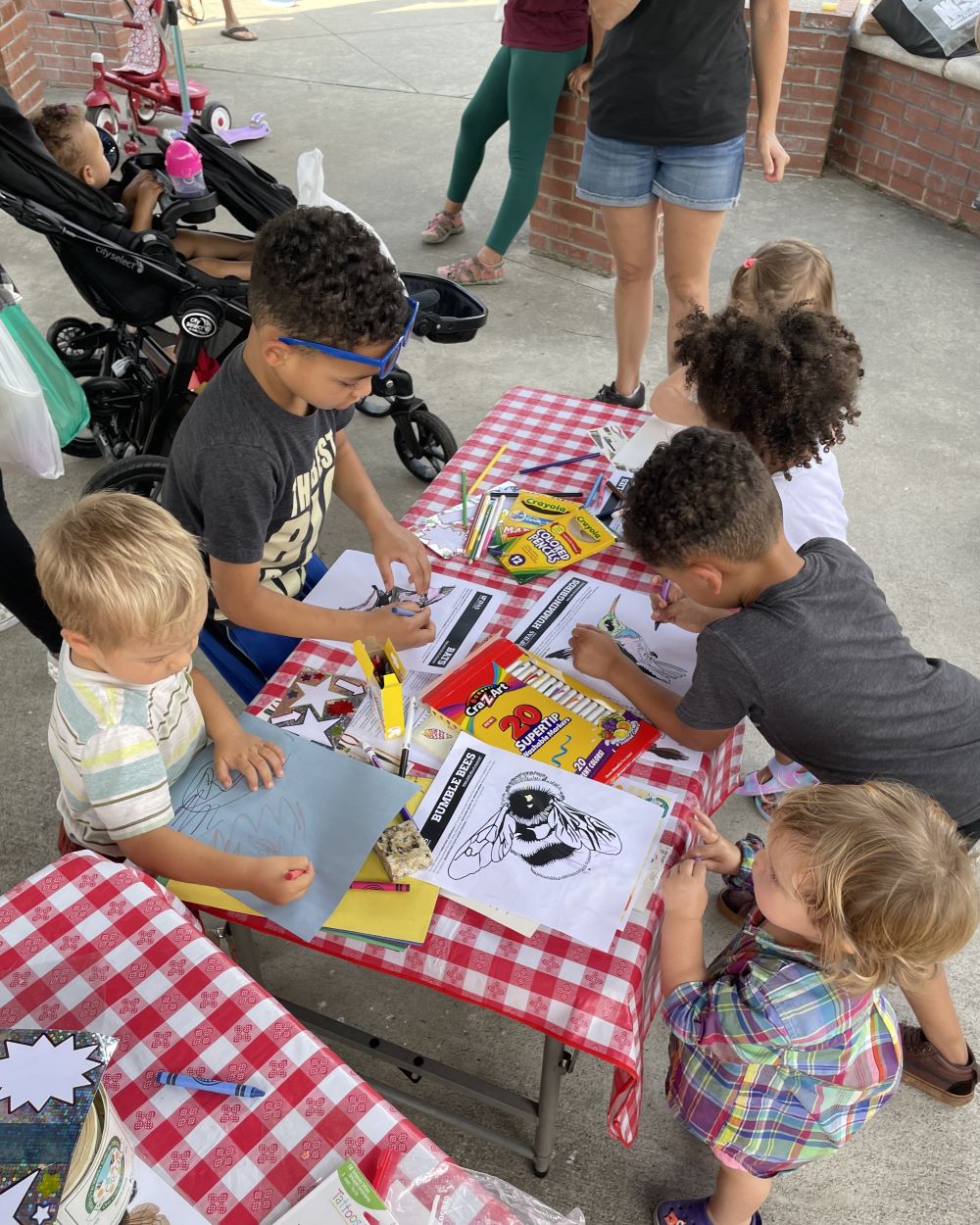
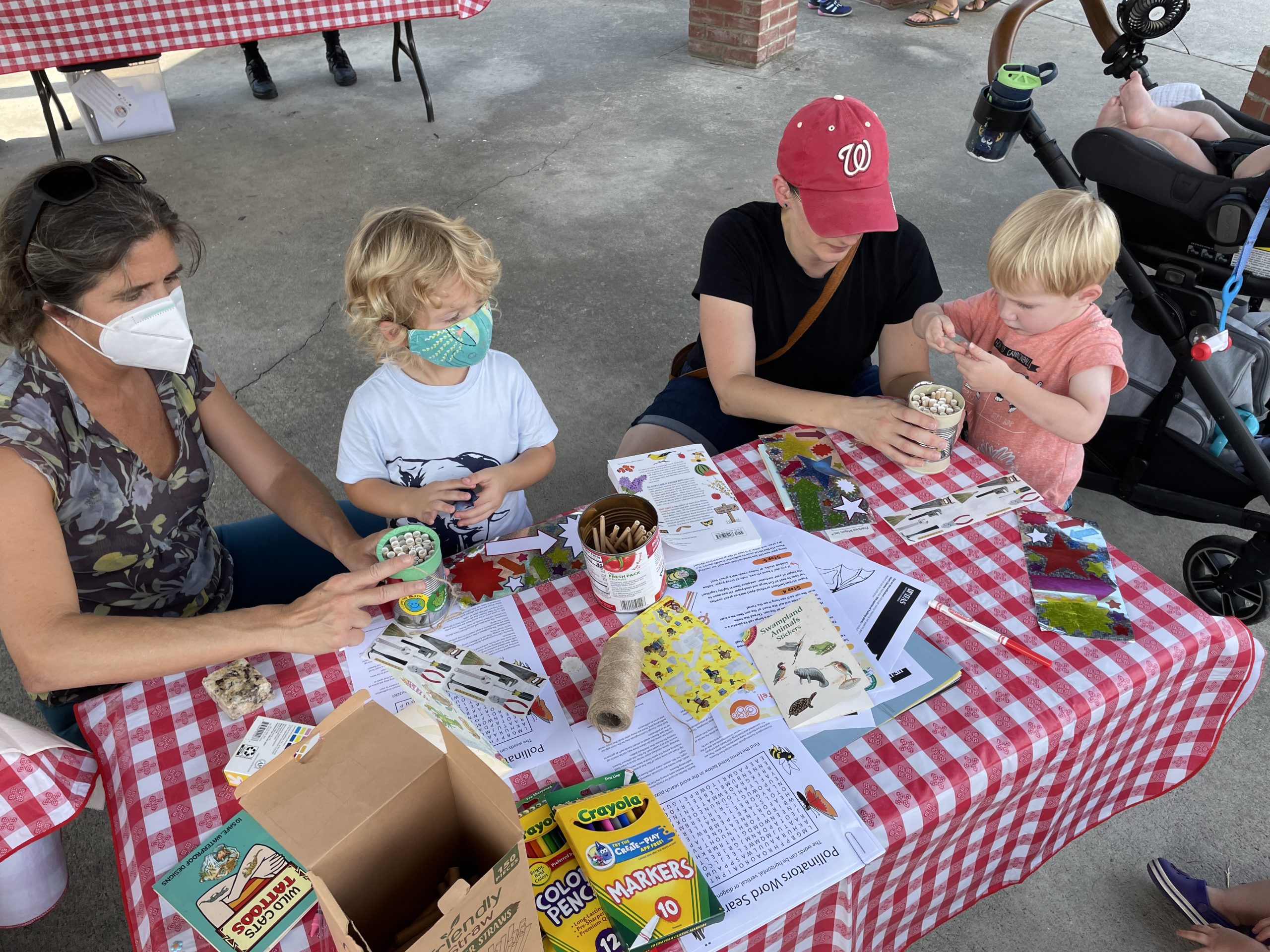
In addition, members of one of Carrboro’s advisory boards, the Climate Action Team, held two pollinator garden tours during Pollinator Week to help educate residents about the importance of pollinators and native plants in community and neighborhood gardens.
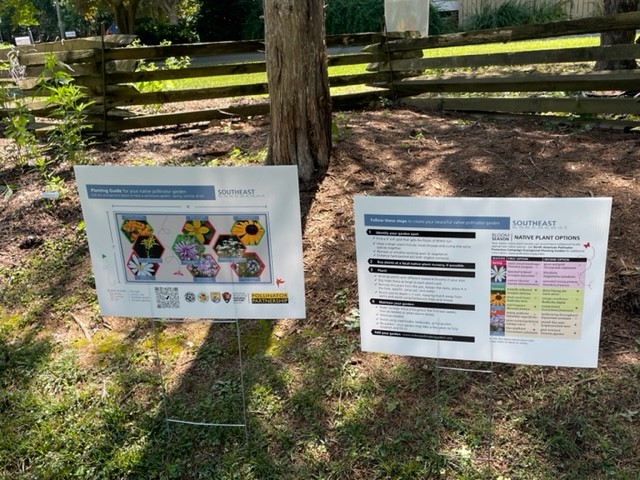
In 2023, encouraged by the successes of 2022, staff continued participating in No Mow May and organized additional events related to invasive species removal, pollinator education, and creating native bee habitat. Staff worked to expand programming in March of that year as part of the town’s Creek Week celebration. Staff led a kids’ buffer ball event in Dr. Martin Luther King, Jr. Park where children were invited to come and get their hands muddy by using clay, compost, and native, pollinator-friendly seeds to form “buffer balls.” After forming the buffer balls, the group walked around a wetland area of the park to throw the balls as far as they could to allow the compost and moisture to nourish the seeds as they sprout and grow.


In late July, the town held Moth Night, an outreach event focused on moths and the roles they play as pollinators. Staff set up sheets in Dr. Martin Luther King, Jr. Park lit by different types of light to attract diverse moth species. Staff instructed participants on moth identification and enjoyed a beautiful sunset! Participation was encouraged throughout the week using the iNaturalist app to identify moths around Carrboro.
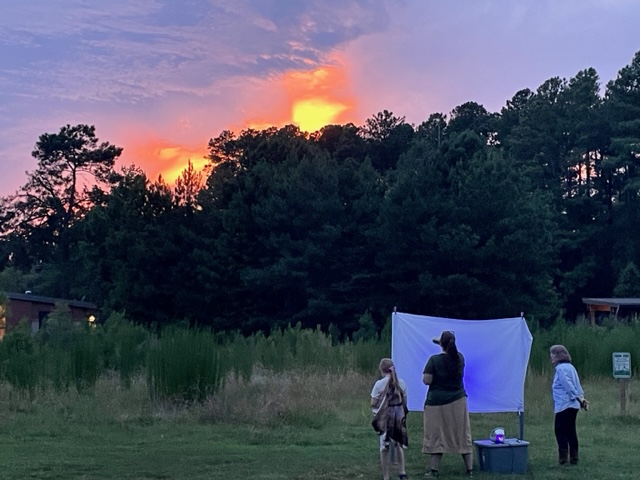
In August, staff organized two volunteer events to encourage participation in the Great Southeast Pollinator Census, a citizen science project created by the University of Georgia [a Bee Campus USA affiliate] aimed at fostering awareness and teaching pollinator identification, while also collecting data for researchers.

Lessons learned:
We have found that it is important to provide planting instructions when giving away seeds, as many people are excited to grow their own plants, but can feel intimidated by not knowing the right time of year or location for planting.
We have also learned that wet weather does not limit volunteers! Several of our invasive species removal events have been held in wet or semi-rainy weather and we have been impressed with the turnout. Also, judging by our buffer ball events, messy and muddy activities can often be a great deal of fun!
The town is excited to continue promoting Bee City USA, creating and conserving pollinator habitat, and learning from other affiliates for many years to come.
